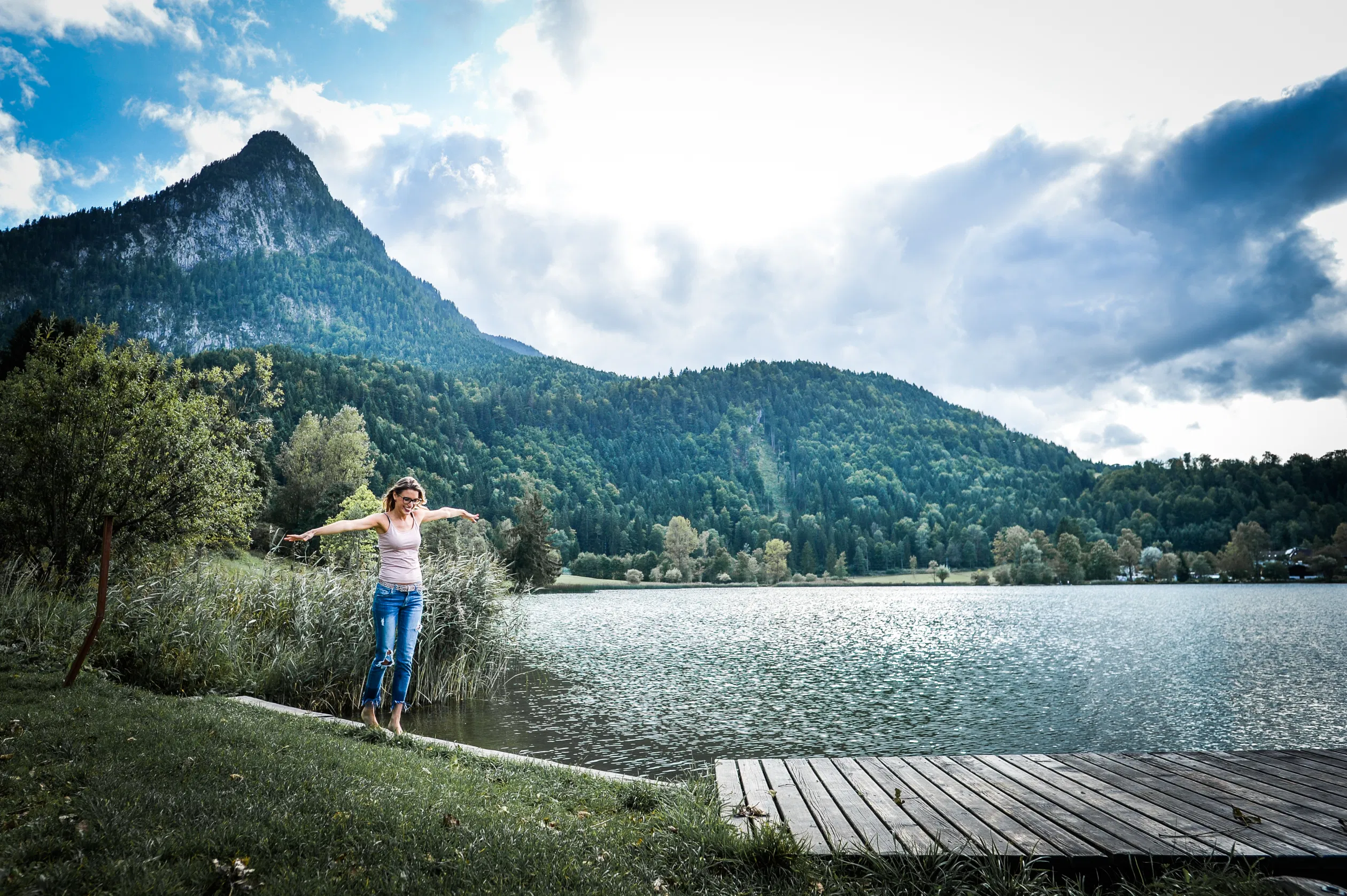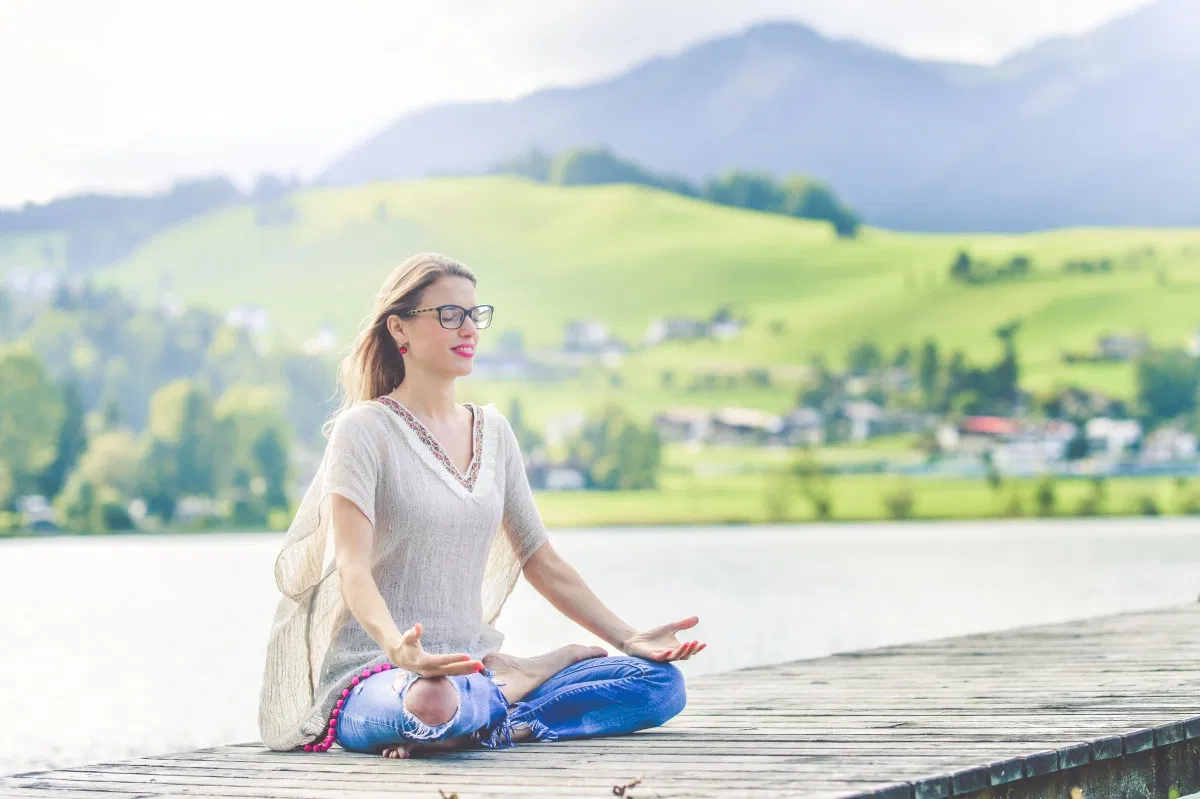What actually is mindfulness?
Mindfulness is a natural human ability that we possess and can strengthen through practice.
Practising mindfulness means being present, awake and aware in contact with the present experience, moment to moment, with a non-judgmental, open and accepting attitude.
"When mindfulness touches something beautiful, it reveals its beauty. When it touches something painful, it turns it around and heals it."
- Tich Nhat Hanh
The qualities of mindfulness
- Non-judgemental - a silent, non-judgemental awareness.
Example: A child marvels at a spider or other insect with complete curiosity and impartiality. - Consciously perceiving - observing, feeling what is (internal and external stimuli).
Example: You notice that the air has a different quality when you breathe in than when you breathe out.
- Effortless - without effort
Example: The bird simply flies or glides, it is in its nature to fly, this happens completely effortlessly. - Accepting what is - the mindful attitude does not want to change anything and looks at reality as it is. Example: You are meditating and noises appear from outside. Try not to interpret this as a disturbance, but take it as an opportunity to go deeper into meditation/relaxation.
- Being in the now - being present, timeless
Example: You can only be mindful of what is emerging right now. As soon as you think about the past or the future, you are not in the now.
- Intensionless - Mindfulness has no goal, it is a conscious non-doing in action, an action without intention. A good example here are the Buddhist monks who carry out their work without achieving a goal.
- Directing attention - through mindfulness you learn to consciously turn your attention to what is good for you and what you want to engage with at that moment.
Example: For the next few minutes, while reading these lines, concentrate entirely on your breath. - Benevolent & Compassionate - Mindfulness is a benevolent state of mind, being kind with your breath, emotions or pain. This creates compassion and joy with all that appears within and without.
What is mindfulness not?
The unconscious state of mind that usually prevails in our everyday life.
Here we identify with the object of observation. It is always linked to a wanting or not wanting. In the process, we evaluate, compare, judge and label what we perceive. This state has nothing to do with mindfulness.
"If you lose touch with the inner silence, you lose contact with yourself.
When you lose contact with yourself, you lose yourself in the world."
- Eckhard Tolle
Practical tips for mindfulness training
1. start the day with mindfulness
Start as soon as you wake up, especially in the morning the mind is still clear and fresh.
Take the first conscious breaths, try to do all the actions you do in the morning mindfully (e.g. showering, brushing your teeth, eating breakfast,...). You will see that the day starts much lighter and happier.
2. create space for yourself
Just a few minutes is enough for mindfulness practice.
For example, use the breaks at work, the drive to work or when you are standing in a queue. But also allow yourself a little time out just for you, for example a mindful walk after a stressful day at work.
3. get fully involved
Make it your life motto and practice mindfulness a little more every day. It starts with your diet and exercise and influences your whole lifestyle.
4. focus your attention on what is good for you
Use your increasing mindfulness to become more sensitive to which people, projects and activities are good for you and turn to them more.
5 Practice slowness
Try to practice slowness as often as possible. This can be when you go for a walk or when you eat. You will see that slowness helps you to become more and more mindful.
6. talk less, listen more
Get into the habit of listening attentively to your counterpart and not immediately assessing what you hear or even indulging in your own thoughts. Also learn to endure the pauses in speech and use your breath as an aid. A mindful conversation between two people is a wonderful gift for both.
7. reflect
Write down your experiences and look back at the successes you have already had. You may also want to inspire someone around you and share your experiences with mindfulness.
"Happiness is a butterfly," said the Master. "Chase after it and it escapes you. Sit down and it settles on your shoulder." "So what should I do to attain happiness?" asked the disciple. "You could try sitting down very still - if you dare."
- Anthony de Mello
With this in mind, dare to implement mindfulness in your everyday life and you will see that your life will be enriched by many things.
Being mindful - living mindfully.





